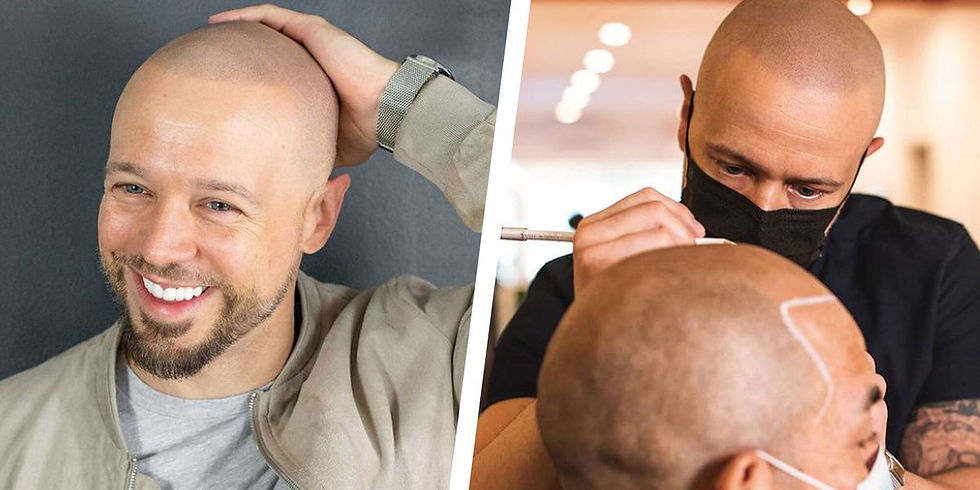Scalp MicroPigmentation’s Increased Traditional Tattooing
- vealboozer
- Feb 8, 2023
- 2 min read

For those who know the details of scalp micropigmentation, the differences are substantial. In the first place, true SMP should natural scalp micropigmentation not be visible with the naked eye because it is meant to mimic the microscopic appearance of the shadow of a pore where the hair is entering the scalp. It should also be placed very shallowly, NOT deep in the skin, to avoid the oil glands and the hair follicle itself. In this way, SMP often does not break the skin or even cause bleeding. Lastly, the pigments and equipment used should be medical grade, of the quality that could be used in an operating room and test patches should be used to check for sensitivity (rare, but smart medical practice).
Unfortunately, with the rise in popularity for SMP, traditional tattoos are being placed on scalps. Patients are lured by the promise of a cheaper SMP treatment to treat unsightly hair loss. Unfortunately, a scalp tattoo looks unnaturally “blotchy” because it is placed deep in the scalp tissues, and it also can change color (usually to orange or blue), and destroy hair when it is placed OR when it is removed.
Yet uninformed patients risk more than just an odd appearance. Recently, the Food and Drug Administration announced the recall of six types of tattoo ink because they are contaminated with bacteria.1 Did you know that Tattoo ink manufacturers are not required to list their ingredients on their labels? The tattoo inks that were recalled were made by a handful of manufacturers and are commonly used by tattoo artists to apply imitation “SMP.” For the record, our office has never used any of these inks.
Inks with bacteria or other microorganisms will cause infection characterized by rashes and other signs of infection. Since the skin is broken during a traditional tattoo application, the infections may spread to the whole body requiring hospitalization and may also leave a permanent scar. The FDA is working to remove the contaminated products from the market and advised consumers to ask tattoo artists or studios what ink they use before a procedure. Studios and artists are advised to no longer use the recalled inks (but are not required to!).



Comments